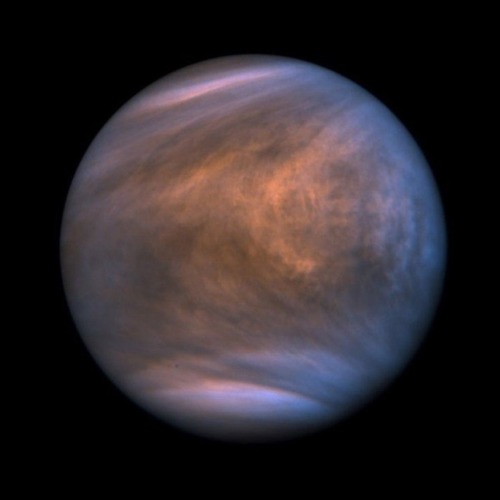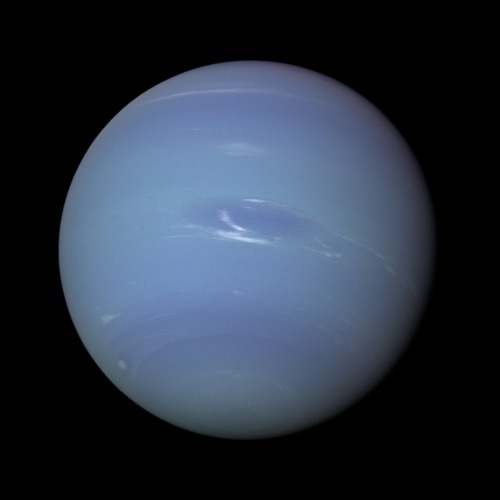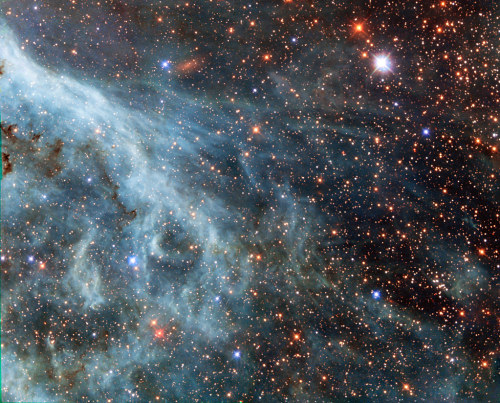IS THE UNIVERSE INFINITE??
IS THE UNIVERSE INFINITE??
Blog# 187
Wednesday, April 27th, 2022
Welcome back,
It’s one of the most compelling questions you could possibly ask, one that humanity has been asking since basically the beginning of time: What’s beyond the known limits? What’s past the edge of our maps? The ultimate version of this question is, What lies outside the boundary of the universe?
The answer is — well, it’s complicated.

To answer the question of what’s outside the universe, we first need to define exactly what we mean by “universe.” If you take it to mean literally all the things that could possibly exist in all of space and time, then there can’t be anything outside the universe. Even if you imagine the universe to have some finite size, and you imagine something outside that volume, then whatever is outside also has to be included in the universe.
Even if the universe is a formless, shapeless, nameless void of absolutely nothing, that’s still a thing and is counted on the list of “all the things” — and, hence, is, by definition, a part of the universe.

If the universe is infinite in size, you don’t really need to worry about this conundrum. The universe, being all there is, is infinitely big and has no edge, so there’s no outside to even talk about.
Oh, sure, there’s an outside to our observable patch of the universe. The cosmos is only so old, and light only travels so fast. So, in the history of the universe, we haven’t received light from every single galaxy. The current width of the observable universe is about 90 billion light-years. And presumably, beyond that boundary, there’s a bunch of other random stars and galaxies.
But past that? It’s hard to tell.

Cosmologists aren’t sure if the universe is infinitely big or just extremely large. To measure the universe, astronomers instead look at its curvature. The geometric curve on large scales of the universe tells us about its overall shape. If the universe is perfectly geometrically flat, then it can be infinite. If it’s curved, like Earth's surface, then it has finite volume.
Current observations and measurements of the curvature of the universe indicate that it is almost perfectly flat. You might think this means the universe is infinite. But it’s not that simple. Even in the case of a flat universe, the cosmos doesn’t have to be infinitely big. Take, for example, the surface of a cylinder.

It is geometrically flat, because parallel lines drawn on the surface remain parallel (that’s one of the definitions of “flatness”), and yet it has a finite size. The same could be true of the universe: It could be completely flat yet closed in on itself.
But even if the universe is finite, it doesn’t necessarily mean there is an edge or an outside. It could be that our three-dimensional universe is embedded in some larger, multidimensional construct. That’s perfectly fine and is indeed a part of some exotic models of physics. But currently, we have no way of testing that, and it doesn’t really affect the day-to-day operations of the cosmos.

And I know this is extremely headache-inducing, but even if the universe has a finite volume, it doesn't have to be embedded.
When you imagine the universe, you might think of a giant ball that’s filled with stars, galaxies and all sorts of interesting astrophysical objects. You may imagine how it looks from the outside, like an astronaut views Earth from a serene orbit above.
But the universe doesn’t need that outside perspective in order to exist. The universe simply is. It is entirely mathematically self-consistent to define a three-dimensional universe without requiring an outside to that universe. When you imagine the universe as a ball floating in the middle of nothing, you’re playing a mental trick on yourself that the mathematics does not require.

Granted, it sounds impossible for there to be a finite universe that has nothing outside it. And not even “nothing” in the sense of an empty void — completely and totally mathematically undefined. In fact, asking “What’s outside the universe?” is like asking “What sound does the color purple make?” It’s a nonsense question, because you’re trying to combine two unrelated concepts.
It could very well be that our universe does indeed have an “outside.” But again, this doesn’t have to be the case. There’s nothing in mathematics that describes the universe that demands an outside.
If all this sounds complicated and confusing, don’t worry. The entire point of developing sophisticated mathematics is to have tools that give us the ability to grapple with concepts beyond what we can imagine. And that’s one of the powers of modern cosmology: It allows us to study the unimaginable.
Originally published on https://www.space.com
COMING UP!!
(Saturday, April 30th, 2022)
“WHAT IS THE ELECTRON CLOUD THEORY??”
More Posts from Of-finite-jurisdiction and Others

Space Station Silhouette on the Moon : What’s that unusual spot on the Moon? It’s the International Space Station. Using precise timing, the Earth-orbiting space platform was photographed in front of a partially lit gibbous Moon last month. The featured composite, taken from Payson, Arizona, USA last month, was intricately composed by combining, in part, many 1/2000-second images from a video of the ISS crossing the Moon. A close inspection of this unusually crisp ISS silhouette will reveal the outlines of numerous solar panels and trusses. The bright crater Tycho is visible on the upper left, as well as comparatively rough, light colored terrain known as highlands, and relatively smooth, dark colored areas known as maria. On-line tools can tell you when the International Space Station will be visible from your area. via NASA
this is my space centered blog, sharing in case any of you guys like space too :^)
With NASA announcing their streaming service NASA+ and also announcing it’s going to be free and also ad free, I’d just like to appreciate the lengths they go to make scientific knowledge and exploration as available as they possibly can.

Jupiter Rotates : Observe the graceful twirl of our Solar System’s largest planet. Many interesting features of Jupiter’s enigmatic atmosphere, including dark belts and light zones, can be followed in detail. A careful inspection will reveal that different cloud layers rotate at slightly different speeds. The famous Great Red Spot is not visible at first – but soon rotates into view. Other smaller storm systems occasionally appear. As large as Jupiter is, it rotates in only 10 hours. Our small Earth, by comparison, takes 24 hours to complete a spin cycle. The featured high-resolution time-lapse video was captured over five nights earlier this month by a mid-sized telescope on an apartment balcony in Paris, France. Since hydrogen and helium gas are colorless, and those elements compose most of Jupiter’s expansive atmosphere, what trace elements create the observed colors of Jupiter’s clouds remains a topic of research. via NASA

NGC 6960, Witch’s Broom
It wrinkles my brain that Jupiter’s moon Europa has oceans that are sixty miles deep, while Earth’s oceans only reach seven miles deep at most. I’m willing to bet good money that there’s life in Europa’s oceans. Like five bucks. You hear me, NASA? I bet you five bucks that there’s life on Europa… Now that there’s money and reputation on the line, I bet they send a mission there real quick.

This peculiar portrait showcases NGC 1999, a reflection nebula in the constellation Orion. NGC 1999 is around 1,350 light-years from Earth and lies near the Orion Nebula, the closest region of massive star formation to Earth. NGC 1999 itself is a relic of recent star formation – it is composed of debris left over from the formation of a newborn star.
Credit: ESA/Hubble & NASA, ESO, K. Noll



Venus, Callisto (Jupiter’s moon), Neptune

Turquoise Plumes in the Large Magellanic Cloud by NASA’s Marshall Space Flight Center
A Dusty Fingerprint in Space

A new image from NASA's James Webb Space Telescope reveals a remarkable cosmic sight: at least 17 concentric dust rings emanating from a pair of stars. Just 5,300 light-years from Earth, the star duo are collectively known as Wolf-Rayet 140. Each ring was created when the two stars came close together and their stellar winds (streams of gas they blow into space) collided so forcefully that some of the gas was compressed into dust. The stars' orbits bring them together about once every eight years, and forms a half-shell of dust that looks like a ring from our perspective. Like a cosmic fingerprint, the 17 rings reveal more than a century of stellar interactions—and the "fingerprint" belonging to Wolf-Rayet 140 may be equally unique. Other Wolf-Rayet stars produce dust, but no other pair are known to produce rings quite like Wolf-Rayet 140.
Learn more about Wolf-Rayet 140.
Make sure to follow us on Tumblr for your regular dose of space!
-
 tsalal reblogged this · 1 year ago
tsalal reblogged this · 1 year ago -
 tsalal liked this · 1 year ago
tsalal liked this · 1 year ago -
 marvi-jude94 reblogged this · 1 year ago
marvi-jude94 reblogged this · 1 year ago -
 marvi-jude94 liked this · 1 year ago
marvi-jude94 liked this · 1 year ago -
 janesgms liked this · 1 year ago
janesgms liked this · 1 year ago -
 diareblogsstuff reblogged this · 1 year ago
diareblogsstuff reblogged this · 1 year ago -
 diareblogsstuff liked this · 1 year ago
diareblogsstuff liked this · 1 year ago -
 ash-leyy23-blog liked this · 2 years ago
ash-leyy23-blog liked this · 2 years ago -
 hungoverelephant liked this · 2 years ago
hungoverelephant liked this · 2 years ago -
 newmusick liked this · 2 years ago
newmusick liked this · 2 years ago -
 starstark liked this · 2 years ago
starstark liked this · 2 years ago -
 doniddb-blog reblogged this · 2 years ago
doniddb-blog reblogged this · 2 years ago -
 doniddb-blog liked this · 2 years ago
doniddb-blog liked this · 2 years ago -
 of-finite-jurisdiction reblogged this · 2 years ago
of-finite-jurisdiction reblogged this · 2 years ago -
 orangefuckingjuice liked this · 2 years ago
orangefuckingjuice liked this · 2 years ago -
 stellarmuffin liked this · 2 years ago
stellarmuffin liked this · 2 years ago -
 7not7 liked this · 2 years ago
7not7 liked this · 2 years ago -
 503blazers-blog liked this · 2 years ago
503blazers-blog liked this · 2 years ago -
 babajagka liked this · 2 years ago
babajagka liked this · 2 years ago -
 that-one-queer-poc liked this · 2 years ago
that-one-queer-poc liked this · 2 years ago -
 magicalmoment liked this · 2 years ago
magicalmoment liked this · 2 years ago -
 acidbathcat liked this · 3 years ago
acidbathcat liked this · 3 years ago -
 zeeseventeen liked this · 3 years ago
zeeseventeen liked this · 3 years ago -
 bodakmafia liked this · 3 years ago
bodakmafia liked this · 3 years ago -
 raggedybatman liked this · 3 years ago
raggedybatman liked this · 3 years ago -
 ket21sworld liked this · 3 years ago
ket21sworld liked this · 3 years ago -
 saraforfree liked this · 3 years ago
saraforfree liked this · 3 years ago -
 justacatheldatgunpointbym-theory liked this · 3 years ago
justacatheldatgunpointbym-theory liked this · 3 years ago -
 husseinjm-blog-blog liked this · 3 years ago
husseinjm-blog-blog liked this · 3 years ago -
 booly111 liked this · 3 years ago
booly111 liked this · 3 years ago -
 emeraldsurfffer liked this · 3 years ago
emeraldsurfffer liked this · 3 years ago -
 ilostthekeytothevault liked this · 3 years ago
ilostthekeytothevault liked this · 3 years ago -
 redkingofsulphur liked this · 3 years ago
redkingofsulphur liked this · 3 years ago -
 strstruckcomiccsanimeoperator liked this · 3 years ago
strstruckcomiccsanimeoperator liked this · 3 years ago -
 avalon709 liked this · 3 years ago
avalon709 liked this · 3 years ago -
 trump-is-your-daddy liked this · 3 years ago
trump-is-your-daddy liked this · 3 years ago -
 snafu6996 liked this · 3 years ago
snafu6996 liked this · 3 years ago -
 jeffkonn liked this · 3 years ago
jeffkonn liked this · 3 years ago

Finn OFJ’s space blog. Do you love space?? you better. or else
39 posts